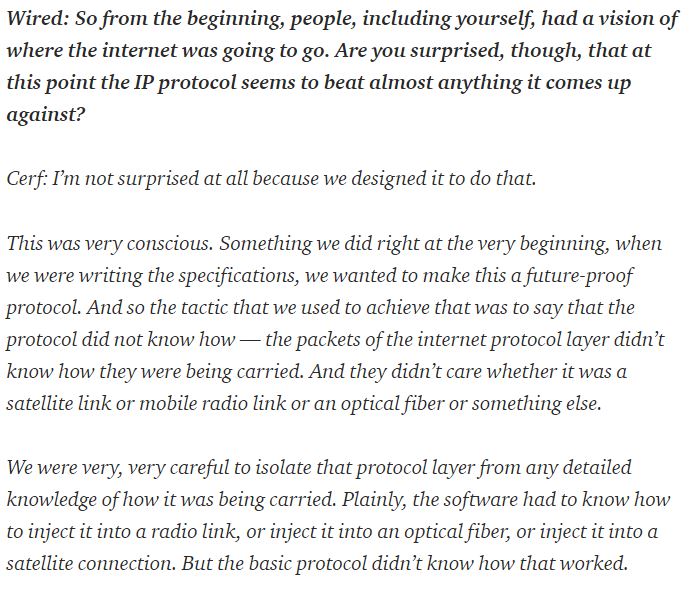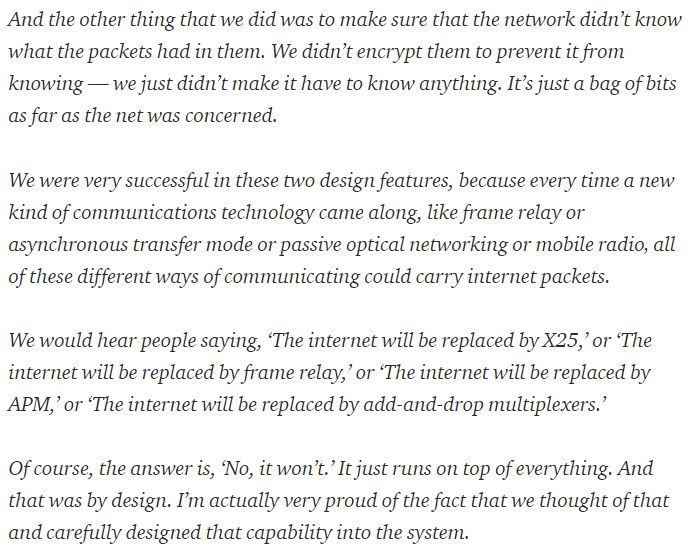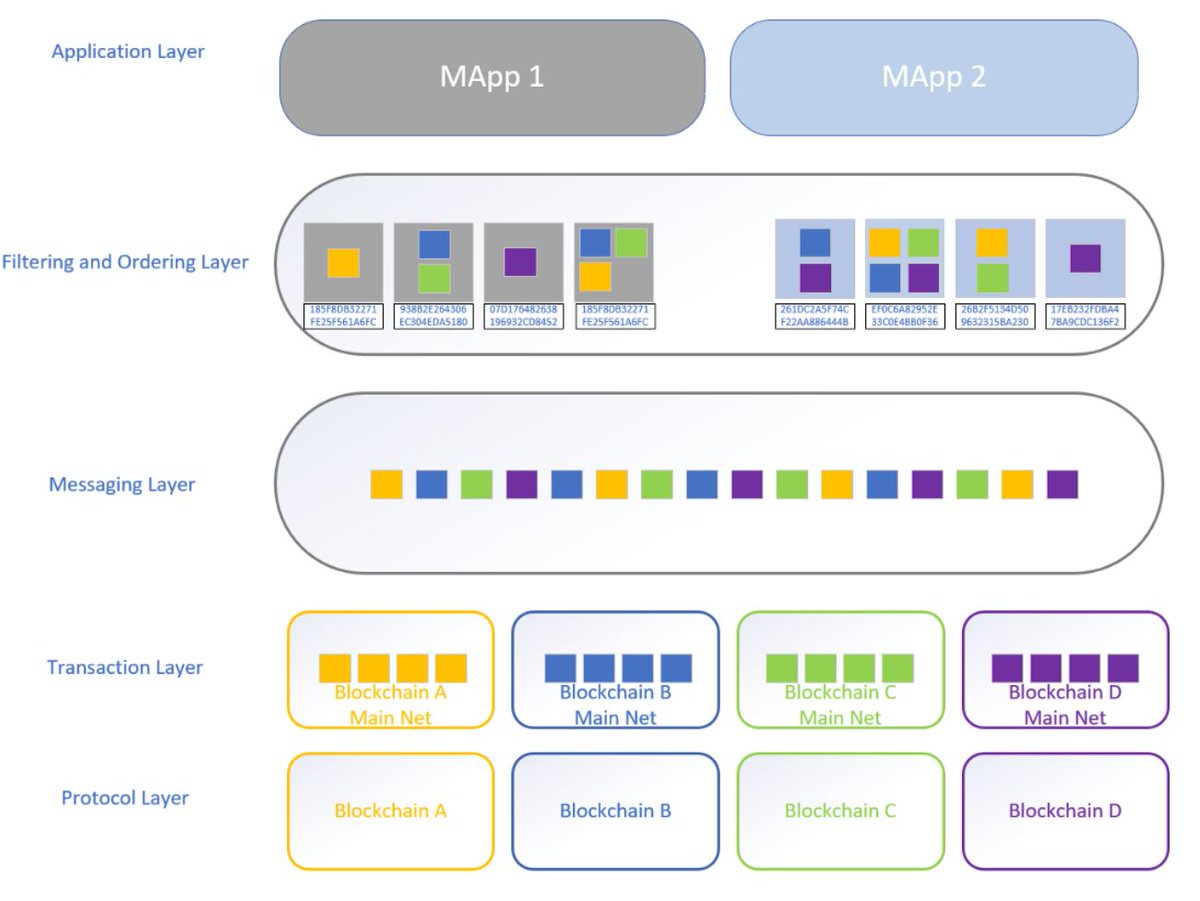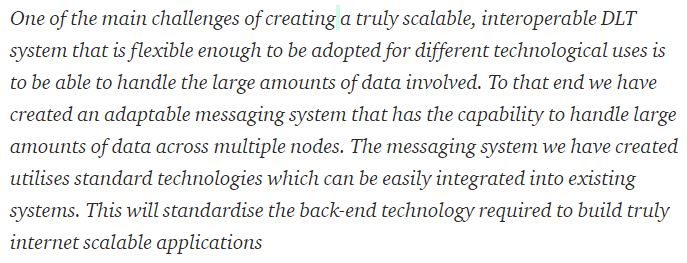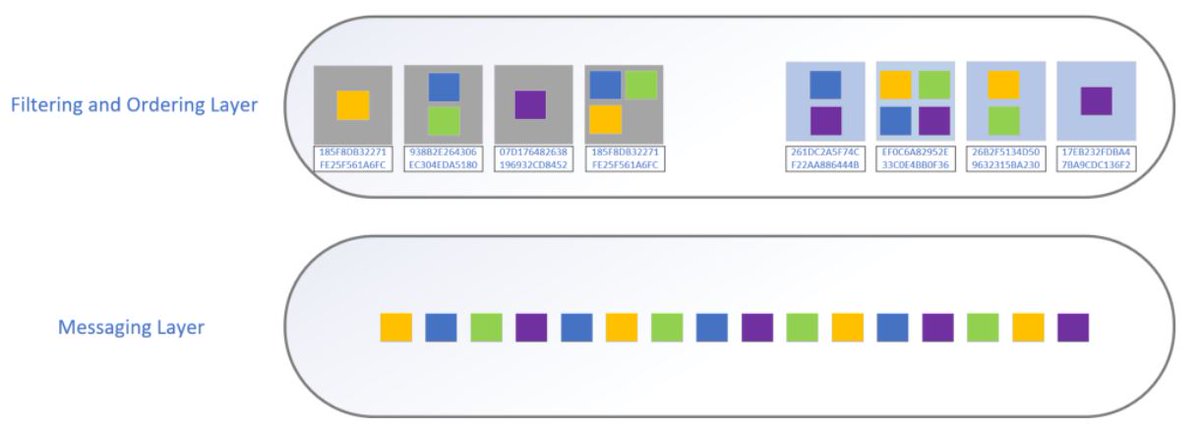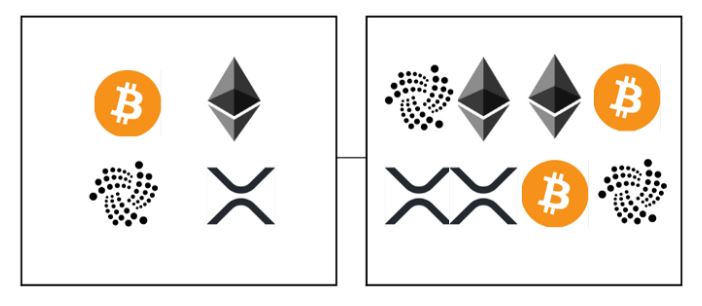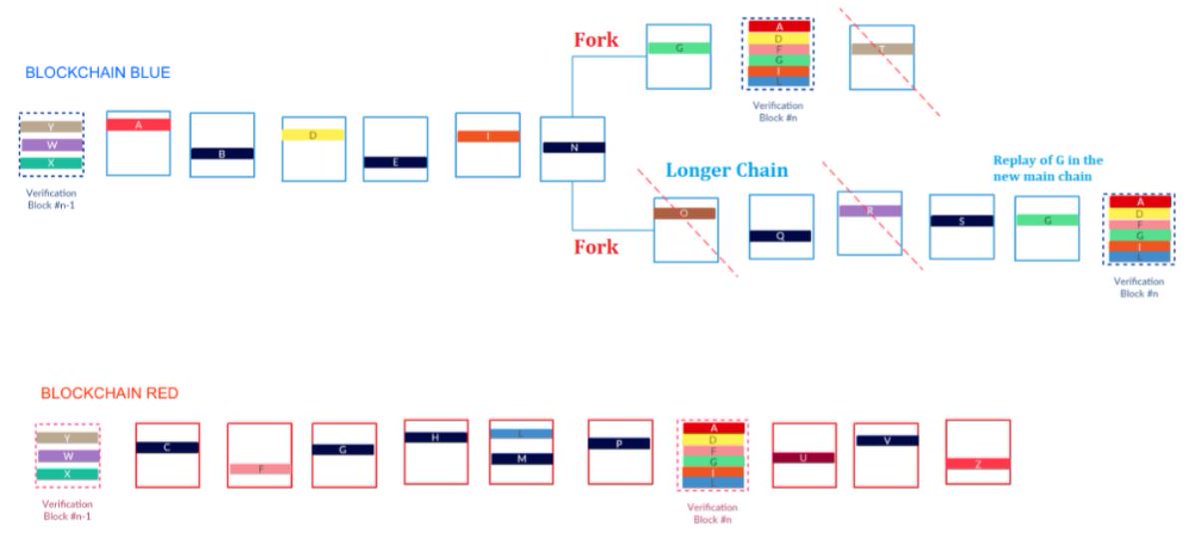1/ Quant& #39;s Overledger isn& #39;t a blockchain, but a blockchain Operating System that runs on top of blockchains to provide scalable Any-to-Any interoperability. What does running on top of blockchains actually mean? Let& #39;s take a look  https://abs.twimg.com/emoji/v2/... draggable="false" alt="👇" title="Rückhand Zeigefinger nach unten" aria-label="Emoji: Rückhand Zeigefinger nach unten">
https://abs.twimg.com/emoji/v2/... draggable="false" alt="👇" title="Rückhand Zeigefinger nach unten" aria-label="Emoji: Rückhand Zeigefinger nach unten">
$QNT
$QNT
2/ First the problem Quant intends to solve - How do you connect all these different blockchains, regardless of what consensus mechanism they use, whether they are permissioned (Hyperledger, Quorum, Corda etc) or permissionless (Bitcoin, Ethereum, Ripple etc), fast or slow,..
3/ blockchain or DAG, any future blockchains as well as legacy off-chain networks so that they are part of one common network despite all the variations and diversity? How do you do it in a internet scalable, standard driven and future proof way?
4/ Quant takes inspiration from the protocol that rules them all: TCP/IP, which has been dominant for the last 40+ years. TCP/IP was designed to be future proof by isolating the different layers so that they didn& #39;t have any knowledge of how it was being carried (see images)
5/ Overledger is also designed to be future proof by isolating the layers so they don’t care which blockchain is being used, what consensus method etc, each layer is only interested with the data within that same layer.
6/ The Transaction Layer stores transactions that are appended, stored, or queued on the various ledgers that are connected. All transactions executed in a specific blockchain are only valid for that ledger. A bitcoin transaction is not valid on the Ethereum network etc.
7/ The Messaging Layer extracts all the information about the transactions and messages digests from every single ledger. Information can be transaction data, smart contract or metadata (such as a digest of messages of out-of-chain messages). Whereas the transaction layer is...
8/ split into individual ledgers, the messaging layer is a shared channel where transactions from all ledgers are stored. The transaction layer is not aware of the contents of the Messaging layer and so it allows all transactions from all ledgers to be put together.
9/ The Filtering and Ordering Layer filters and orders messages from the Messaging layer that are referenced for a MAPP through the digest of out of chain messages. This layer is also responsible for checking that the message meets the application schema and its requirements.
10/ It’s basically like each MAPP has a virtual blockchain that takes transactions from all the various ledgers (compared to having to deal with isolated ledgers in the transaction layer) that are referenced via a digest of out of chain messages from the messaging layer and ...
11/ orders them into virtual blocks, known as Verification blocks. There is no order among transactions in the same block and each block can contain messages from different blockchains.
12/ A hash pointer to the Verification Block is then written to the blockchains that form part of the application. The Verification Block is keeping the order across all chains involved in the application of hashes which have been appended after the consensus has been reached.
13/ If the application commits a block to the wrong side of a fork and that particular fork is not accepted as part of the consensus mechanism, the Verification Block can detect and prompt the application to take action.
14/ The MAPP then periodically re-scans the blockchains involved back to the Verification Block. New compliant transactions added to the blockchains for the MAPP are then appended to the Verification Block, which is updated on the blockchains involved and the process repeats.
15/ The final layer is the Application Layer where each MAPP is isolated from each other and contains the business logic which is independent from the lower components.
16/ The MAPP updates the state of the application from the messages from the Filtering and Ordering layer that are specific to the MAPP. The application layer takes responsibility for all the other layers by defining the rules and how to interact with the blockchains.
17/ Treaty contracts will run in this layer to allow smart contract functionality across multiple blockchains (even for those like BTC which don’t have smart contract functionality) https://www.quant.network/solutions/multi-dlt-smart-contracts/">https://www.quant.network/solutions...
18/ The design of Overledger enables interoperability across many blockchains / legacy networks to be processed in parallel rather than being restricted to just 2 connected blockchains like other solutions and without the overhead of an additional consensus method in the middle.
19/ Even though Overledger isn& #39;t a blockchain it still has the same benefits with a virtual blockchain for each MAPP and a verification block being written across many blockchains to update the application state,
20/ plus all the underlying blockchains which transactions related to the MAPP and the verification block gets written to are all handled by their consensus mechanism rather than having additional overhead / bottleneck by adding another in the middle.
21/ So, if a new blockchain technology comes out that is capable of 100,000 TPS then it can easily be integrated as Overledger just runs on top of it and other blockchains rather than being a blockchain itself.
For more info see this article - https://medium.com/@CryptoSeq/quant-networks-overledger-part-two-the-layers-of-overledger-ea23a7148af1">https://medium.com/@CryptoSe...
For more info see this article - https://medium.com/@CryptoSeq/quant-networks-overledger-part-two-the-layers-of-overledger-ea23a7148af1">https://medium.com/@CryptoSe...
22/ Part three is also related and explains the off-chain messages and their associated digests referred to above. https://medium.com/@CryptoSeq/quant-networks-overledger-part-three-trusttag-and-the-tokenisation-of-data-71b325f4247d
This">https://medium.com/@CryptoSe... 50-tweet thread contains more info on Quant and additional resources https://twitter.com/CryptoSeq/status/1277555274405068801">https://twitter.com/CryptoSeq...
This">https://medium.com/@CryptoSe... 50-tweet thread contains more info on Quant and additional resources https://twitter.com/CryptoSeq/status/1277555274405068801">https://twitter.com/CryptoSeq...

 Read on Twitter
Read on Twitter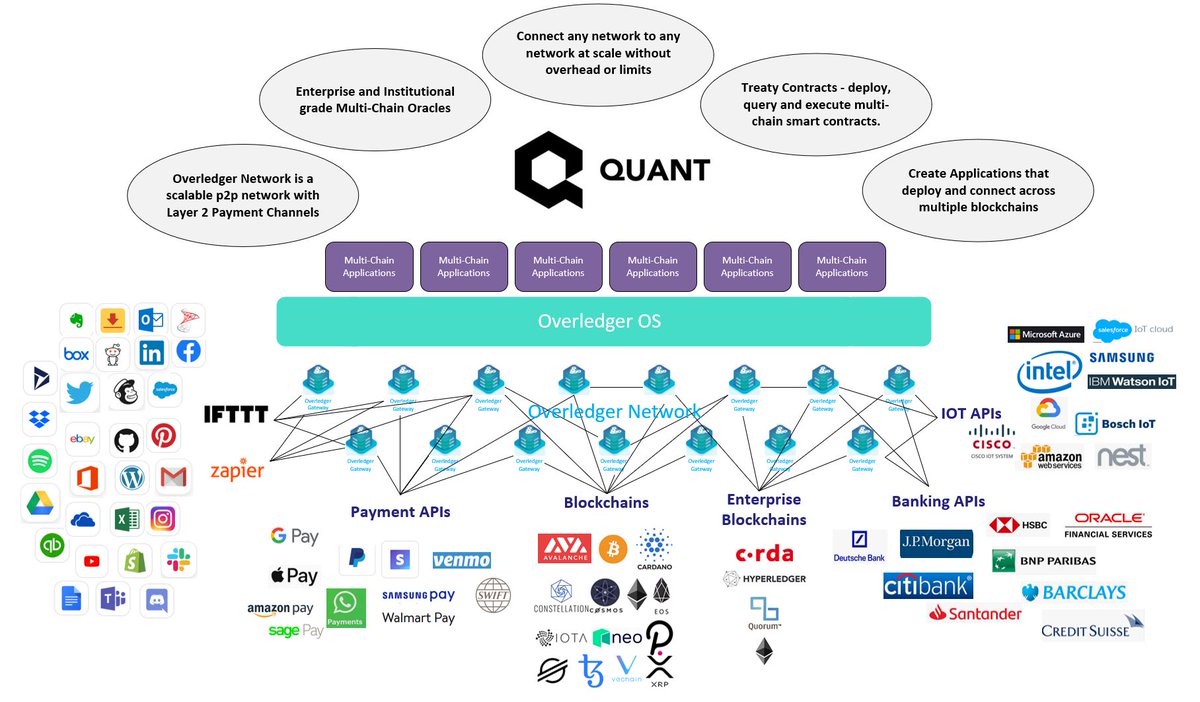 $QNT" title="1/ Quant& #39;s Overledger isn& #39;t a blockchain, but a blockchain Operating System that runs on top of blockchains to provide scalable Any-to-Any interoperability. What does running on top of blockchains actually mean? Let& #39;s take a look https://abs.twimg.com/emoji/v2/... draggable="false" alt="👇" title="Rückhand Zeigefinger nach unten" aria-label="Emoji: Rückhand Zeigefinger nach unten"> $QNT" class="img-responsive" style="max-width:100%;"/>
$QNT" title="1/ Quant& #39;s Overledger isn& #39;t a blockchain, but a blockchain Operating System that runs on top of blockchains to provide scalable Any-to-Any interoperability. What does running on top of blockchains actually mean? Let& #39;s take a look https://abs.twimg.com/emoji/v2/... draggable="false" alt="👇" title="Rückhand Zeigefinger nach unten" aria-label="Emoji: Rückhand Zeigefinger nach unten"> $QNT" class="img-responsive" style="max-width:100%;"/>
